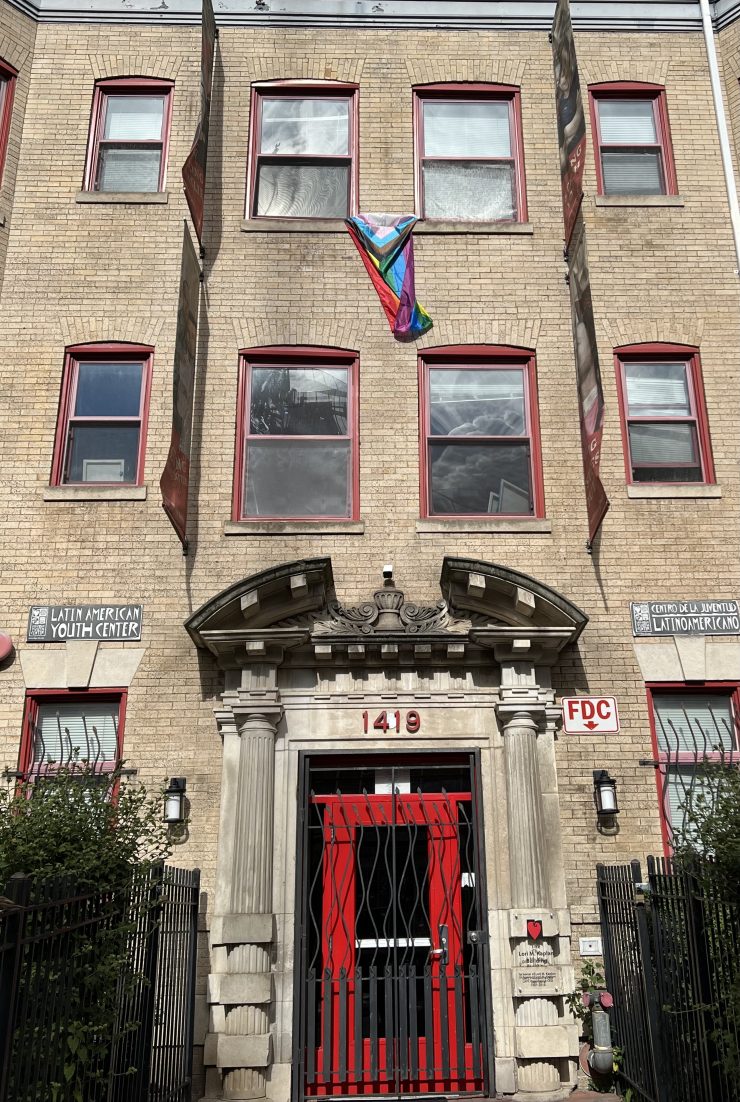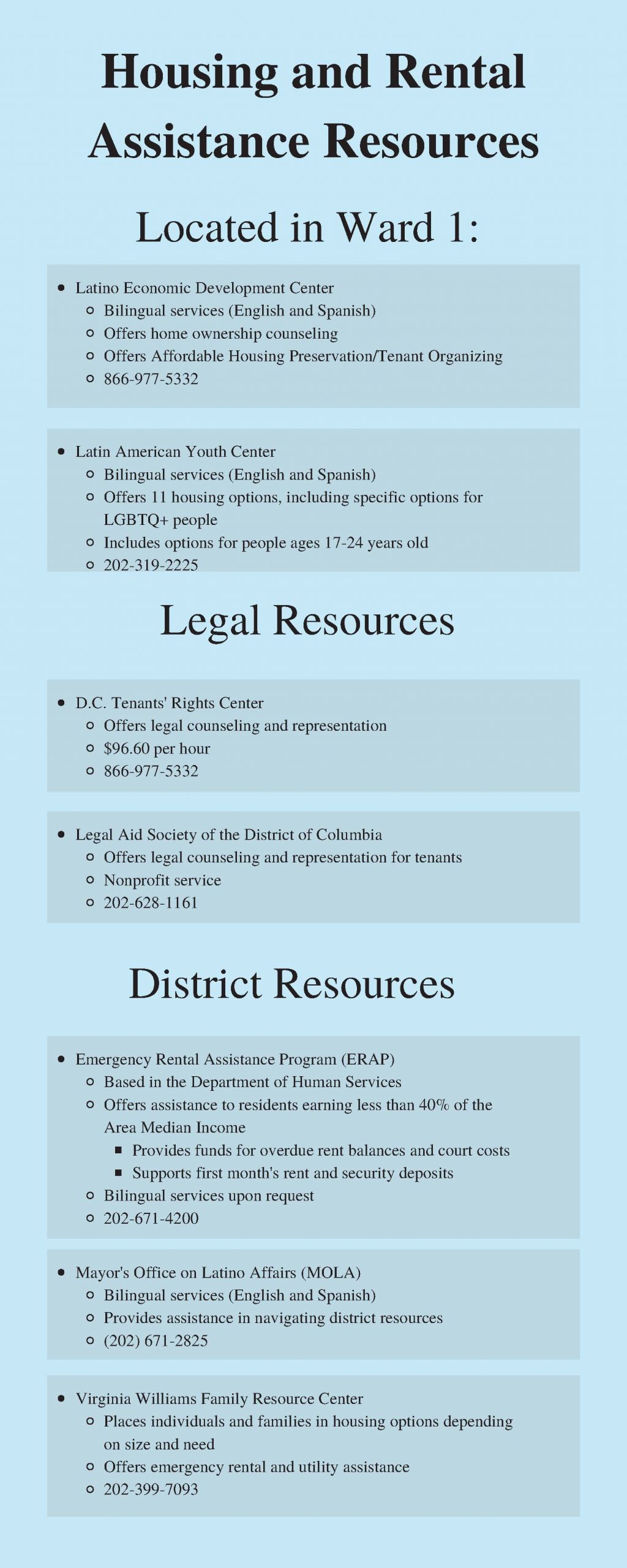The D.C. Public Health Emergency may be officially over, but the pandemic — and the financial struggles of some renters — are not.
Leigh Higgins works as a senior attorney with the D.C. Tenants’ Rights Center, an organization dedicated to offering legal advice and representation to district renters. Pandemic era rental safeguards are coming to a close, but Higgins said not all renters are ready to go back to normal.
“I think there are some people who are starting to get back on their feet but who are looking at a balance that is just unpayable,” Higgins said.
With Stay DC no longer accepting applications and the D.C. eviction moratorium being phased out, organizations offering tenant and housing resources are preparing for more people to need their services.
Stay DC was a federally funded assistance initiative allowing renters and tenants to apply for rental and utility payments.
The program stopped accepting tenant applications Oct. 27, after officials announced the federal money designated to the city was quickly dwindling and 95% of the total allotted funds were already obligated. Housing provider applications closed Nov. 2.
As of Oct. 28, the program distributed over $165 million in rental assistance and over $8 million in utility assistance funds.
“I think that was a great big pot of money from the federal government, and it just turns out that it was not enough,” Higgins said.
D.C. has so far distributed the most money allocated from the federal Emergency Rental Assistance program of any participating state. Matthew Brandeburg, an Advisory Neighborhood Commission (ANC) 1D member, told The Wash the amount distributed demonstrated the city’s amount of need and dedication to helping residents
Brandeburg’s ANC represents the Mt. Pleasant community, which he believed greatly benefited from the D.C. assistance programs. He said his ANC is still actively working to fight against food and housing insecurity.
“We do have a lot of residents who have a variety of backgrounds that are lower income, and, you know, are more susceptible to, unfortunately, being impacted by some of these changes,” Brandeburg said.
These changes are also affecting the non-governmental housing resources trying to help residents.
Latin American Youth Center Housing Director Eskayra Pagan said her group in Columbia Heights sometimes would have to direct residents to other services. LAYC offers 11 different housing programs based on the level of need but still does not always have enough space to help.
Without government programs, Pagan believed resource groups across the district could potentially be busier than they have been throughout the pandemic.
“We need more providers. We need more funding. We need more programs, or longer time in the programs,” Pagan said.
Ward 1 residents did not need significantly more help than other parts of the city, Pagan said, but they did need more resources in Spanish to serve the large Latinx population. All D.C. government offices had bilingual staff, but she did not think they had enough to meet the community’s need for them.
Stay DC allowed community members to talk with more localized resources, Brandeburg said, as the program’s wide virtual presence allowed residents to connect more easily with organizations like LAYC and the Latino Economic Development Center (LEDC).
Walda Yon works as the LEDC Chief of Housing Programs and helped translate applications and rules to Hispanic renters who came to the center. She told The Wash many in the community still needed assistance because they had not recovered from pandemic job loss or mental strain from either being sick themselves or helping family members.
“Giving the opportunity to these community based organizations that were providing the services for them, I think that was a good move for the city,” Yon said.
With Stay DC ending, Yon believed the community would need to be more well-versed in the Emergency Rental Assistance Program (ERAP), which is currently discussed by the D.C. City Council.
Seven council members introduced a resolution Oct. 28 calling for more funds to be directed to ERAP because of Stay DC coming to a close and a concern over the possibility of more evictions.
Yesterday #STAYDC stopped accepting new applications for rent relief.
I, @BrianneKNadeau, @charlesallen, @trayonwhite, @RobertWhite_DC, @chenderson, and @marycheh just introduced a resolution calling on @MayorBowser to dedicate local funds to preventing mass evictions in DC. pic.twitter.com/nuHNHjpkIt
— CM Janeese Lewis George (@CMLewisGeorgeW4) October 28, 2021
ERAP has already been expanded over the past year and a half, Higgins said, making it more useful for renters. In the past, applicants utilized ERAP when facing evictions, but it can now be used for various rental expenses.
Yon said LEDC will still help residents apply for ERAP, but she said to truly help residents, the city and communities needed to find the source of the housing problem. People, especially in the Latinx community, were greatly affected by job loss in the hospitality industry during the pandemic hit and have not recovered, Yon said.
“To cooperate and to get out of the pandemic that is going to be a need of career career advice probably or job development,” Yon said. “I see that there is a need in that area of helping the community to acquire and to know these skills, so they can have more opportunities.”
In the meantime, Yon hoped the U.S. Treasury would distribute more funds to the Stay DC program to help residents and local housing resources. Bowser petitioned for more funds that are being taken from states not using them as quickly, but there is currently no plan to receive more.
“I always say that the District of Columbia has been a very strong protection for tenants,” Yon said. “So that they need to look for information to be informed of their rights.”

















Add comment